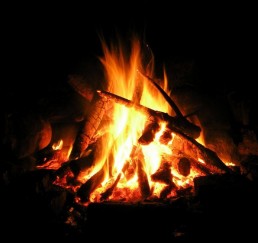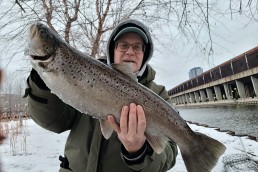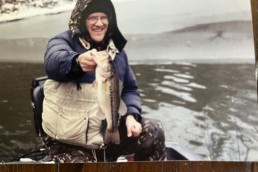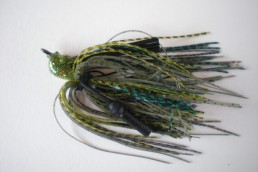Emergency Signals: A Collection of Contrasts
SHARE THIS POST
Survival Signals
By common definition, a signal is a gesture used to convey information. In a back-country emergency, that gesture is usually a flare, fire or smoke. The information is simply: “Help signals” or “SOS signals”.
To be effective, a signal must be seen. It must stand out in sharp contrast to its surroundings and background. Think dark logs on a light beach, pine boughs on snow or brightly colored material against a curtain of dark spruce. Add movement to strengthen the effectiveness of that color contrast. Wave a makeshift flag.
Fires are great for signaling. Attract attention with their brilliance at night or an abundance of dense smoke by day (contrast is important here, too). A series of three fires in a line and close together is a recognized international distress signal. Likewise, most hunters know that an evenly-spaced series of three shots is a call for help, too.
Flares, either hand-held, placed on the ground or launched into the sky also produce highly visible signals. Flares are perhaps more effective in low-light conditions. However, a brilliant, long-burning, high altitude parachute flare or large ground flare produces both light and a smoke trail that can be seen from a great distance. During the day, a smoke flare is the best visual signal. Larger canisters can produce a huge amount of dense, orange smoke over a period of many seconds.
Likewise, the larger aerial flares burn longer and brighter than do the convenient, inexpensive and often unreliable pocket or pen flares. One advantage of the small, pocket variety (known to have a high rate of misfires) is that they are cheap and therefore more expendable than an expensive parachute or other high-altitude air signal. Since they’re cheap, you are more likely to fire them.
The best flare or signal in the world must be seen to have any value. This rather obvious point stresses the importance of knowing when to activate a signal. Ground fires and smoke should always be at the ready for quickly igniting. Likewise, an aerial flare must be launched quickly but only when search craft have a high probability of seeing it.
A sequence of flares, from higher to lower, and farther to closer, that draws the rescuers towards you both optimizes your flares and conserves them for when you need them the most.
Non-pyrotechnic ground signals need to be large! Objects on the ground appear much smaller from the air than they actually are, even from a low, slow-flying aircraft. A common size ratio for length-to-width of an emergency signal is 5:1, where 1 is the minimum width (suggested at 3 feet) of each segment of the sign, and 5 represents how many times taller the letters need to be to be visible from the air.
For example: if you were laying out evergreen boughs in the snow to form a distress signal to be seen from the air, the classic “SOS” should be constructed by sections at least 3 feet wide, forming letters at least 15 feet high.
Are you enjoying this post?
You can be among the first to get the latest info on where to go, what to use and how to use it!
To draw attention to yourself and attract rescuers on the ground, the best signaling device is a whistle! It’s one critical piece of emergency gear that you and every member of your party should carry at all times. You can only yell and scream for so long; but you can reach out with the shrill voice of a whistle all day and all night.
Forget the ‘referee’ type with the little rattling pea inside. If the pea sticks, the whistle is nearly noiseless. Numerous ‘pea-less’ emergency whistles are available. Some are barely audible while others can shred your eardrums. Find a durable, loud survival whistle and buy several. Clip them to your equipment, stash one in a pocket of frequently-worn outdoor gear. Just make sure you always have one with you.
Local environmental conditions affect how these signaling methods work. Wind can be a big nuisance. It can dissipate smoke almost immediately or cause an aerial flare to veer off course. Wind also can muffle even the most piercing scream of a whistle. Ideally, your arsenal of signaling options includes both sight and sound devices.
The most important self-reliance tip is that the most effective signals stand out in contrast to their surroundings. What you can create or initiate to draw attention to yourself against your backdrops and immediate vicinity should determine what kind of signal to make.
Lastly, know that as wonderful as technology is, batteries wear down, recharging fails and reception isn’t always reliable. Gadgets are great, but resourcefulness and self reliance, when combined with a positive attitude, remain the smarter options when it comes to emergency signals. MWO
Tom Watson is a former team member of Kodiak Island Search & Rescue, kayak tour operator, and author of How to Think Like a Survivor: A Guide for Wilderness Emergencies; Best Tent Camping – Minnesota; 60 Hikes Within 60 Miles Minneapolis and St. Paul; and Best Minnesota Camper Cabins. (All available on Amazon.) He’s a freelance writer and presenter on self-reliance and other outdoor topics. tomoutdoors.com.
MWO
SHARE THIS POST
Did you enjoy this post?
You can be among the first to get the latest info on where to go, what to use and how to use it!
MWO
We believe being outdoors is good. With more than 1,000 articles each year, MidWest Outdoors magazine is all about sharing outdoor experiences with you—where to go, what to use and how to use it… whether you’re close to home or on that trip of a lifetime.



